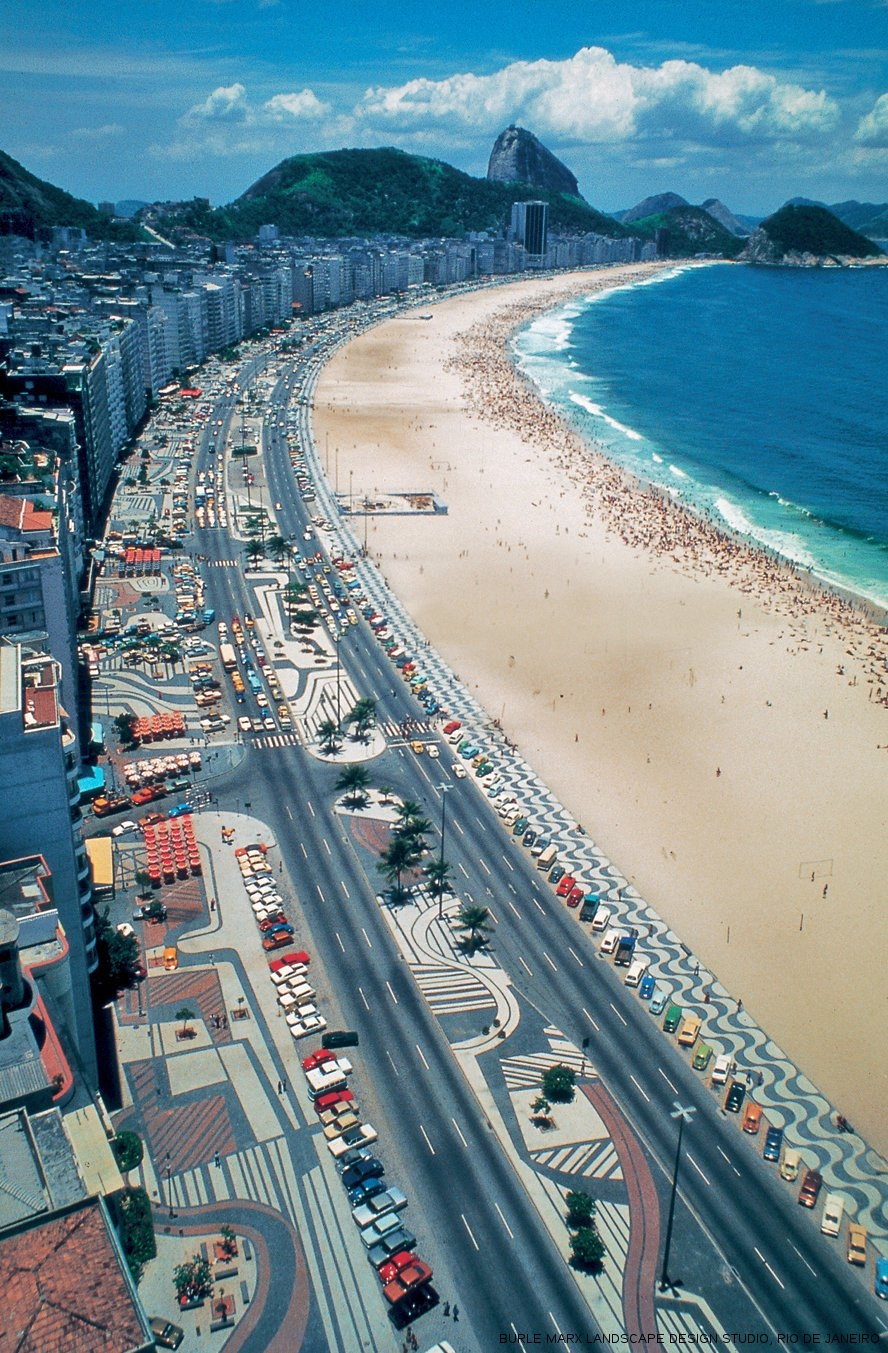You get back to Eden by preserving what exists of the original, or by creating new versions of your own. Roberto Burle Marx, the great Brazilian landscape architect, did both. From the 1930s onward, mainly in South America, he designed some of the modern world’s most distinctive parks and gardens, from an immense, jazzy tattoo of a promenade on the Rio de Janeiro beachfront to rooftop plantings in a city carved overnight from jungle, Brasília. In the process, he became deeply invested, heart and mind, in saving the Amazonian paradise that surrounded him; fought to halt its devastation; and turned his home near Rio into a botanical rescue farm, a sanctuary for one of the world’s largest collections of tropical plants. Despite this ecological pioneering, his name, though monumental in Brazil, is not widely known in New York. No surprise. There’s no park or garden by him here to experience firsthand. Landscape design, a fundamentally sensual genre, doesn’t translate easily into museums. For many people, the very connection between gardens and art may be a stretch. The last New York survey of his career was in 1991, at the Museum of Modern Art, and it seems not to have attracted wide notice. I hope “Roberto Burle Marx: Brazilian Modernist,” now at the Jewish Museum, will. It deserves to. It’s a lovely and eye-opening show. Among other things, this show demonstrates that Burle Marx’s aesthetic contributions went beyond plantings. He created mural-size decorative wall coverings from ceramic tiles; wall reliefs carved in wood and stone; and immense wool tapestries, one of which takes up an entire wall in this exhibition’s main gallery. It also suggests that this artist, who died in 1994, has finally found his proper global context in an environmentally activist moment that he, long ago, helped create. ....You get back to Eden by preserving what exists of the original, or by creating new versions of your own. Roberto Burle Marx, the great Brazilian landscape architect, did both. From the 1930s onward, mainly in South America, he designed some of the modern world’s most distinctive parks and gardens, from an immense, jazzy tattoo of a promenade on the Rio de Janeiro beachfront to rooftop plantings in a city carved overnight from jungle, Brasília. In the process, he became deeply invested, heart and mind, in saving the Amazonian paradise that surrounded him; fought to halt its devastation; and turned his home near Rio into a botanical rescue farm, a sanctuary for one of the world’s largest collections of tropical plants.
Despite this ecological pioneering, his name, though monumental in Brazil, is not widely known in New York. No surprise. There’s no park or garden by him here to experience firsthand. Landscape design, a fundamentally sensual genre, doesn’t translate easily into museums. For many people, the very connection between gardens and art may be a stretch. The last New York survey of his career was in 1991, at the Museum of Modern Art, and it seems not to have attracted wide notice. I hope “Roberto Burle Marx: Brazilian Modernist,” now at the Jewish Museum, will. It deserves to. It’s a lovely and eye-opening show.
Among other things, this show demonstrates that Burle Marx’s aesthetic contributions went beyond plantings. He created mural-size decorative wall coverings from ceramic tiles; wall reliefs carved in wood and stone; and immense wool tapestries, one of which takes up an entire wall in this exhibition’s main gallery. It also suggests that this artist, who died in 1994, has finally found his proper global context in an environmentally activist moment that he, long ago, helped create.
....
